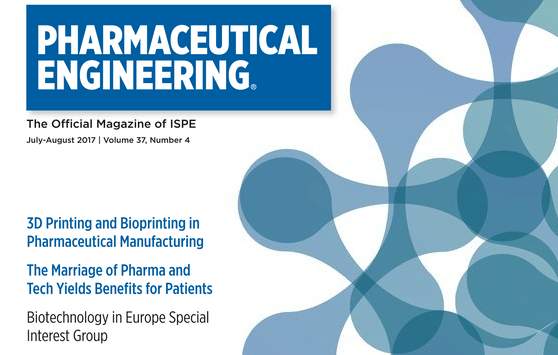
Pharmaceutical Engineering | Summer Edition ~ 3D printing and bioprinting have the potential to transform how drug candidates are tested, how drugs are manufactured, the supply chain, and industry dependence on animal testing, according to the cover story in the magazine for the International Society of Pharmaceutical Engineering. The technology is also being used to create tissue and miniature cellular models, some of which can even mimic the biology of human organs.
“The tool-less making of tablets permits novel pill shapes, which can affect the absorption rate,” Peter Denmark, North American sales manager for EnvisionTEC, told the magazine. “It allows for patient-specific drugs for which the dosage can be calculated per patient per disease due to additive manufacturing.”
What’s more, “the supply chain will be shortened and become hyper-local” Denmark said. “Think of the compounding pharmacies having an additive manufacturing machine in-house to produce patient-specific pills. And for drug testing of new candidates, dosage can be changed on the fly, with less expense, locally.”

Peter Denmark, North American Sales Manager, EnvisionTEC
EnvisionTEC’s 3D-Bioplotter is frequently used for pharmaceutical research, and more than 200 peer-reviewed research papers have been published based on studies with the 3D-Bioplotter. Click here to learn more.




